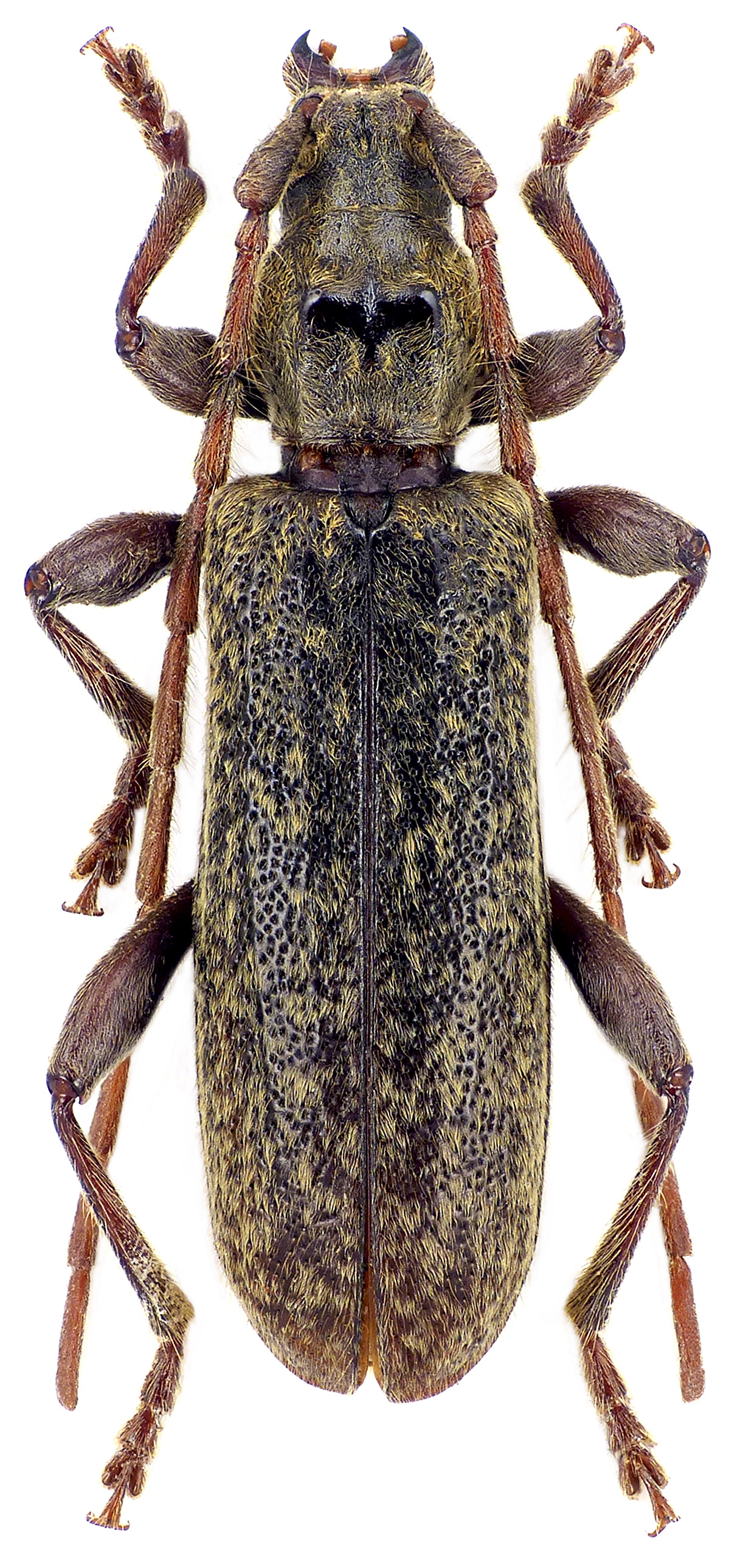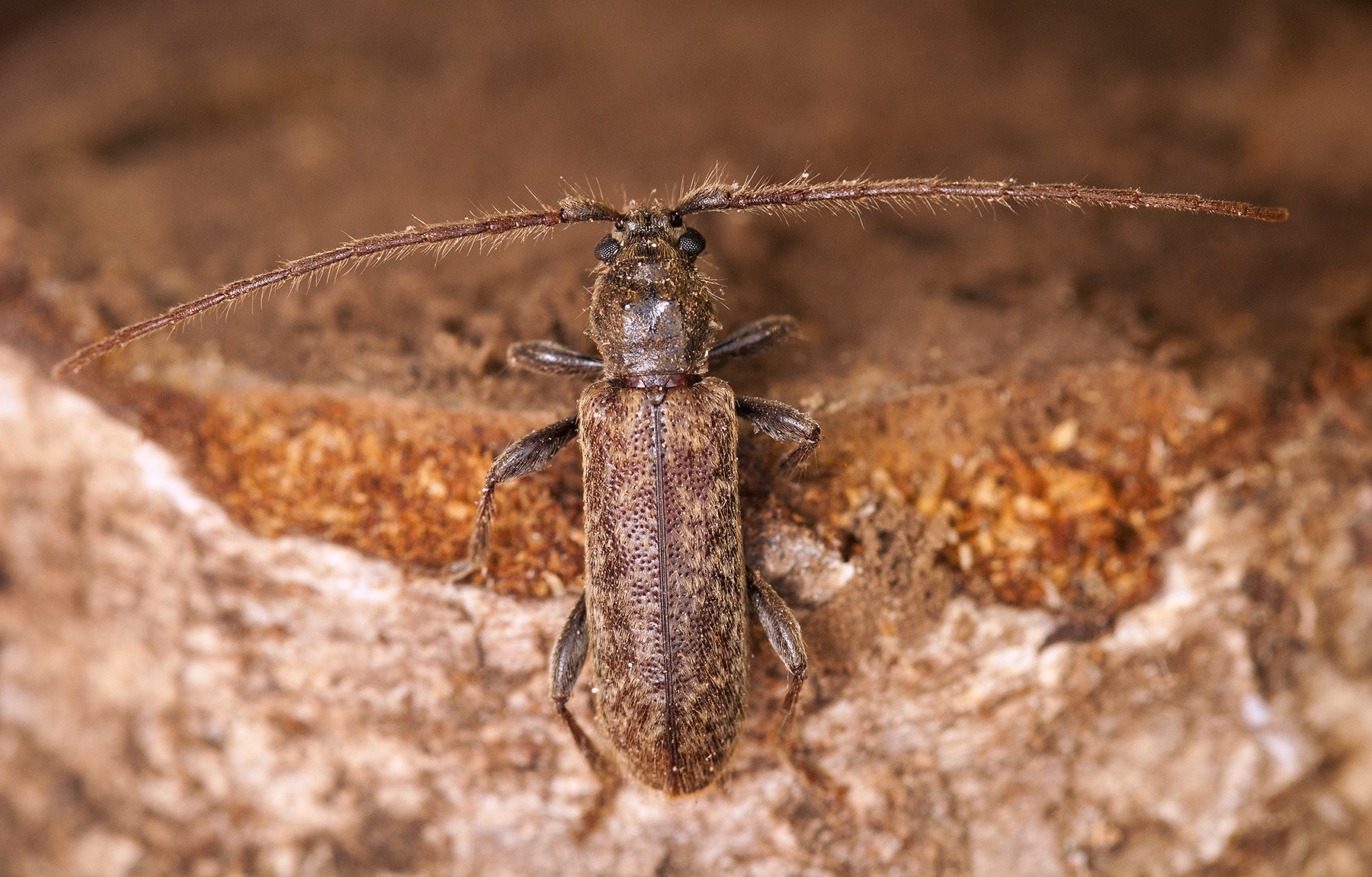Blabinotus spinicollis, nocturnal species endemic to Canary Islands and Madeira, was described by Thomas Vernon Wollaston from Curral das Freiras
(Câmara de Lobos district, Madeira) in 1854 [✧]. Larvae of this beetle mainly develop in
Laurus azorica but other broadleaved
tree species have also been reported to serve as hosts (Salix, Persea indica and
Apollonias barbujana). The species is a typical inhabitant of humid laurisilva
forests and is strictly confined to such habitats. Females oviposit into recently dead shoots of Laurus azorica situated in fairly shady locations. Typically the
diameter of such shoot is 5 -10 cm. Up to several larvae can develop in one dead shoot. Only rarely branches within canopy or other sun exposed tree parts are attacked.
Young larvae first feed subcortically creating rather broad galleries filled with nonfibrous frass. Later instar larvae enter sapwood and create pupal cells there. Adults
hatch in December but do not leave the pupal cells before February.
| Body length: | 9 - 15 mm |
| Life cycle: | 2 - 3 years |
| Adults in: | February and August |
| Host plant: | prefers Laurus azorica |
| Distribution: | endemic to Macaronesia (Canary Islands and Madeira) |
The depicted beetles ware reared from a dead branch of Laurus azorica collected in Barranco de Los Tiles de Moya (Gran Canaria, Canary Islands, Spain) and
in Hermigua (La Gomera, Canary Islands, Spain), respectively.
Collected by Petr Kabátek and P.Jelínek
[✧]
Wollaston T.V.:
Insecta Maderensia; being an account of the Insects of the Islands of the Madeiran group.
London, van Voorst, 634pp [pages 427-427 and Table IX], 1854.
[download  ]
]





